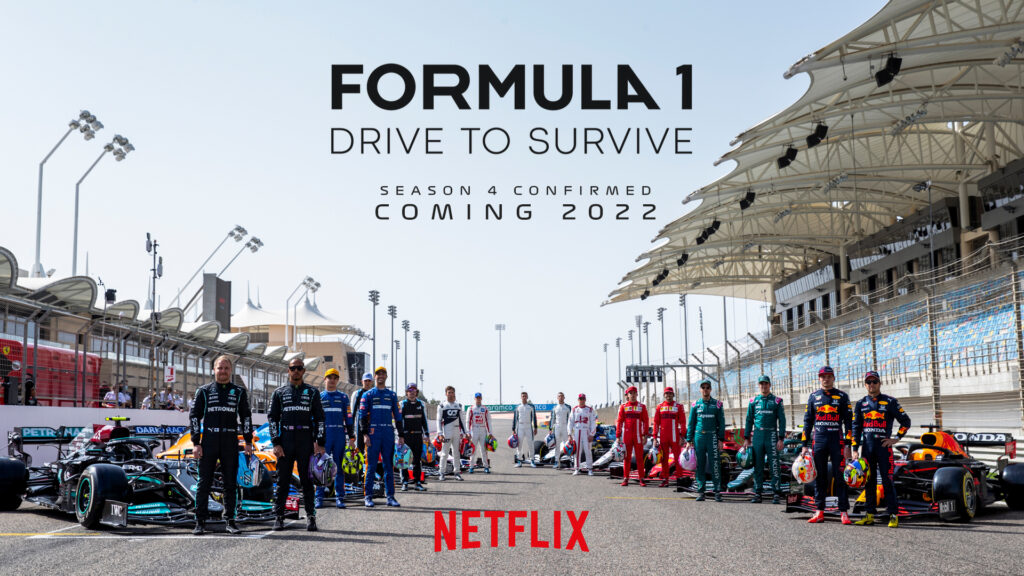Formula 1 is the fastest growing sports brand on social media in 2021. It was new territory for the brand, much to the dismay of Bernie Eccelstone, its former CEO and owner.
In a 2014 interview, he expressed his views.
“I’m not interested in tweeting, Facebook and whatever this nonsense is,” he said. “I don’t know why people want to get to the so-called ‘young generation’. Why do they want to do that? Is it to sell them something? Most of these kids haven’t got any money, I’d rather get to the 70-year-old guy who’s got plenty of cash.”
He simply didn’t have a vision for how the penniless younger generation can amount to anything but extra marketing expense.
Under Eccelstone’s reign, the business was stable, the F1 Supremo managed to maintain an estimated turnover of $4 billion!
But the rush and glamour seemed to rust with time. According to a management report by Motorsport Network in 2017, fans were not satisfied with F1, with negative brand descriptions like “boring” and “corrupt” marking the survey red.
The Liberty Media Takeover
In 2017, Formula 1’s custody changed hands and became a part of Liberty Media. To take control of F1 is no easy feat. Along with fame and perks, Liberty Media also took over the debt and the other issues that came with the sport. By the end of 2020, they were $3.7 billion in debt. Liberty Media sought to change one thing drastically—F1’s marketing.
Their plan was simple—get F1 on the social media race and manage to get younger audiences on board. This would make the brand more appealing to sponsors with its new younger audience.
Audience Distribution
In a Reddit Q&A, Matt Roberts, the global research director for F1, candidly gave figures that describe their audience demographic, “the average age of a global F1 viewer is 40. 14% are under 25, 30% are 25-34, 20% are 35-44, 20% are 45-54 and 17% are over 55. The average age is higher in more established markets like the UK, Italy and Germany whilst it is youngest in newer F1 markets like US and China.”
Since the new approach to marketing, the number of F1 fans has risen to reach 503 million globally, as estimated by a study in 2019. The same study stated that 61 per cent of the audiences who joined in the year leading up to the release of the research, were under the age of 35 and 46 per cent of total fans are females. F1’s social media has also seen a rise in the active fan base as 42 per cent of all fans are a part of the social media fandom.
F1’s Marketing Revamp
Liberty Media understood that the problem with Formula 1 wasn’t sports-related, but a deep abandonment of new-age marketing.
Liberty swooped in, armed with Chase Carey, the CEO of DirecTV, COO of 21st Century Fox, COO of News Corporation and who launched FOX Sports and FOX News. Basically, a big shot media mogul.
In a 2017 interview with CNBC’s Squawk Box, Carey admitted that sponsorships were their fastest-growing revenue stream. “Realistically today we have a one-man sponsorship operation. There are many categories we are not selling into. We have signage at tracks we’re not selling,” he said.
Formula 1 had a reputation for being a sport of the rich old me and Eccelstone saw no reason why it should be anything else. F1 needs to generate money, and the young don’t have money to burn.
Liberty expanded the market and made it more inclusive for the younger generation and women. Credit for making a space in F1 for women largely belongs to Ellie Norman, the first female executive at F1. “38 per cent of our fanbase are female. Broadly speaking society is 50/50 and we want to continue to further represent females in the sport,” says Norman.
Norman developed marketing campaigns that were more ‘real-time and reactive.’ Campaigns that took key moments from the race before and displayed them in 30-second sections to keep the audiences engaged. Many creative campaigns were since created, but they all faced one problem, “The reality is that outside of avid fans, not many casual or non-F1 fans saw the ad,” said Roberts.
Streaming and Esports
Liberty took no time going after Netflix and Esports streaming in general. ‘Drive to Survive,’ a Netflix Documentary series, saw many younger viewers than the sport’s usual demographic.

Currently, in its third season, the series is a massive success. Their Esports Series, Grand Prix Driver, saw more than 11 million streams in 2020, and the Grand Final reached 1.7 million social media engagements, surpassing any other F1 event.
The pandemic threatened to bring a halt to the roaring success of F1 racing but Liberty launched a Virtual Grand Prix which saw more people than ever before trying to qualify for the season which led to participation increasing 117 per cent to 237,000.
“We had to adapt in the way we operated for this year’s Pro Series due to the pandemic, but we’re thrilled to see that it didn’t affect viewers enjoyment, or consumption, of the action,” said Julian Tan, Formula 1’s Head of Digital Business Initiatives & Esports.
Formula 1 surprise launched the Esports series in 2017. Interest in it was slow to rise but after the pandemic hit 2020, suddenly the participation rose and celebrities started getting involved. Roberts was delighted in the success of the venture, “Esports has been great for us so far. 80% of the audience is under 35 years old, but it is amazing when you compare this to ageing TV audiences.”
Increase in Sponsorships
The success of F1’s new marketing campaign opened many doors for it. The huge influx of diverse audiences translated to more sponsors wanting to get on board.
In particular, there has been growth in the number of digital service providers joining F1 sponsorships. Soon the third biggest contributor to F1 team commercial revenues was Telecoms and Technology.
“What is undoubtedly true is that F1’s success in attracting a younger audience will help maintain its evergreen appeal in the global sponsorship market,” and “Its future success is therefore inextricably linked to ensuring new and younger audiences can and will consume its content,” says Neil Hopkins, global head of strategy at M&C Saatchi Sport and Entertainment.
Audience First
Liberty Media is aware of the role that fans play in the success of any sport. “We are myopically focused on serving the Formula 1 fan,” said Sean Bratches, F1’s ex commercial boss, in 2018.
Formula 1 had the most innovative technology and engineering marvels at their disposal, what they lacked before Liberty took over was an overwhelmingly inclusive passion. Liberty’s first marketing campaign, Engineered Insanity, puts the fans in the middle of all the exhilaration.
The new F1 marketing wanted to clear the disconnect between fans and the races. They joined digital platforms, not only giving snippets of the race but valuable data that fans can use to understand the races and compare statistics on a deeper level. F1 started building a strong digital presence, a move appreciated by their increasing young audience. Not just social media or Esports, fans can follow F1 on podcasts, apps and F1TV.
Now that F1 is on social media, fans can interact with the racers who don’t seem detached anymore. Until Liberty Media’s intent on reaching more people, drivers were not allowed to have profiles on social media or interact with fans in any manner that wasn’t approved.
Drivers being unveiled as real people have made fans attached to them. It is not just racing anymore, but the lives behind the tracks.
The issues that drivers care about have also surfaced and have become part of the F1 conversation. Lewis Hamilton, one of the greatest drivers in F1 history, has taken a stand on We Race As One for Covid-19, racial injustice and having a net-zero carbon footprint by 2030. Audiences feel heard, and issues are relevant to them.
A Great Turn
Formula 1 is transformed, from a sport of the rich to one that can be enjoyed by all.
Even with the influx of millions more fans, Roberts is adamant that “it is important that we don’t alienate our older viewers in pursuit of these younger fans as they will have been fans for many years and are more likely to sit through the 2 hours race.”
Formula 1’s change in its marketing opened new avenues for them but the crux of the races will always be technological innovation and just raw speed.
Written by Osheen Jain
Edited by Suranjan Das
| Osheen is a passionate student of psychology who works as a freelance content writer for PrimalWoke. Her interests include modern poetry, enjoying all forms of art, and being an obsessive bibliophile. Osheen has also been a TEDx speaker and you can find her on LinkedIn.
